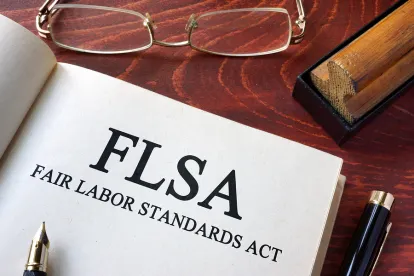In its first major overhaul of the Fair Labor Standards Act’s (“FLSA”) joint employer standard since the 1950s, the Department of Labor has brought some clarity to the definition of this relationship after decades of varying interpretations and applications of the existing rule, including the very broad interpretations adopted by the Obama Administration.
Under the new rule, which will go into effect March 16, 2020, there are two scenarios under which an employee might have one or more joint employers:
-
The employee has an employer who “suffers, permits, or otherwise employs the employee to work, but another individual or entity simultaneously benefits from that work[;]” or
-
One employer employs the employee for one set of hours in a workweek, and another employer employs the same employee for a separate set of hours in the same workweek, but the jobs and the hours worked for each employer are separate.
As in the first scenario, where an employee performs business for one employer but simultaneously performs business for another, the DOL has adopted a four-factor balancing test to determine whether the other employer is acting “directly or indirectly” in the interest of the employer in relation to the employee. The four factors are: (1) whether the business can hire or fire employees; (2) whether the business controls its employees’ schedules or conditions of employment to a substantial degree; (3) whether the business determines its employees’ pay rates and pay methods; and (4) if the business maintains its employees’ employment records. No single factor is dispositive in determining joint employer status, and the appropriate weight given to each will vary depending upon the circumstance. Please note, however, that under the rule, factor 4 (the maintenance of employment records) alone does not demonstrate joint employer status.
In the second scenario, the DOL will look to see if the two employers are “sufficiently associated” with respect to the employee such that they must aggregate the hours worked for purposes of determining whether they are compliant. Some factors to be considered in determining whether two entities are “sufficiently associated” include: whether there is a shared services agreement between the employers, whether they share control over the employee such that one employer is acting directly or indirectly in the interest of the other employer in relation to the employee, and whether they share control of the employee.
The EEOC and the NLRB have recently also proposed new rules defining “joint employer,” but neither have yet made any final determinations. Both focus on direct and indirect control over the employees, but vary from the Rule adopted by the DOL with respect to application of the FLSA.
Click here to review the Final Rule. Readers may find the “examples” provided by the DOL in 29 C.F.R. § 791.2(g) particularly helpful in understanding how the new rule will be interpreted. Also, for those wanting even more information, a handy FAQ document has also been published by the DOL and can be found here.





 />i
/>i


